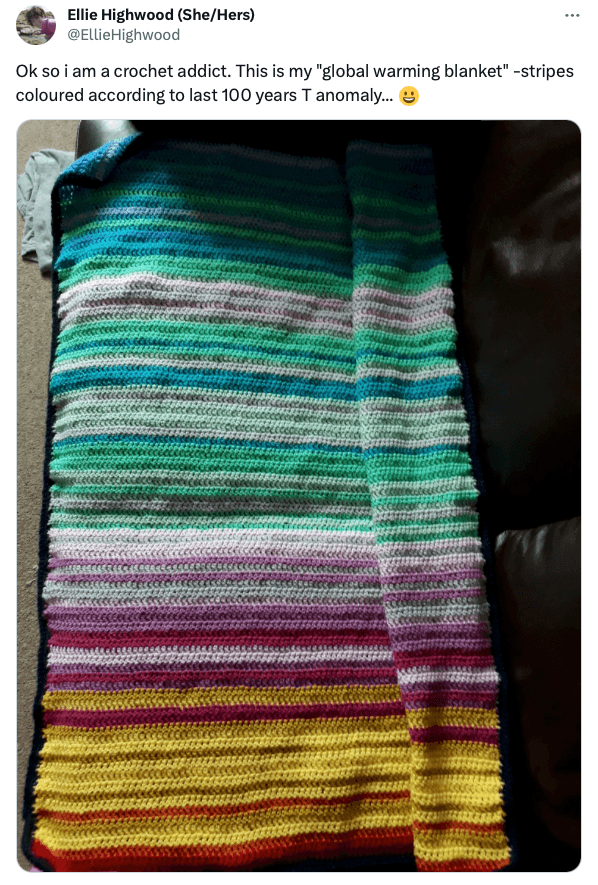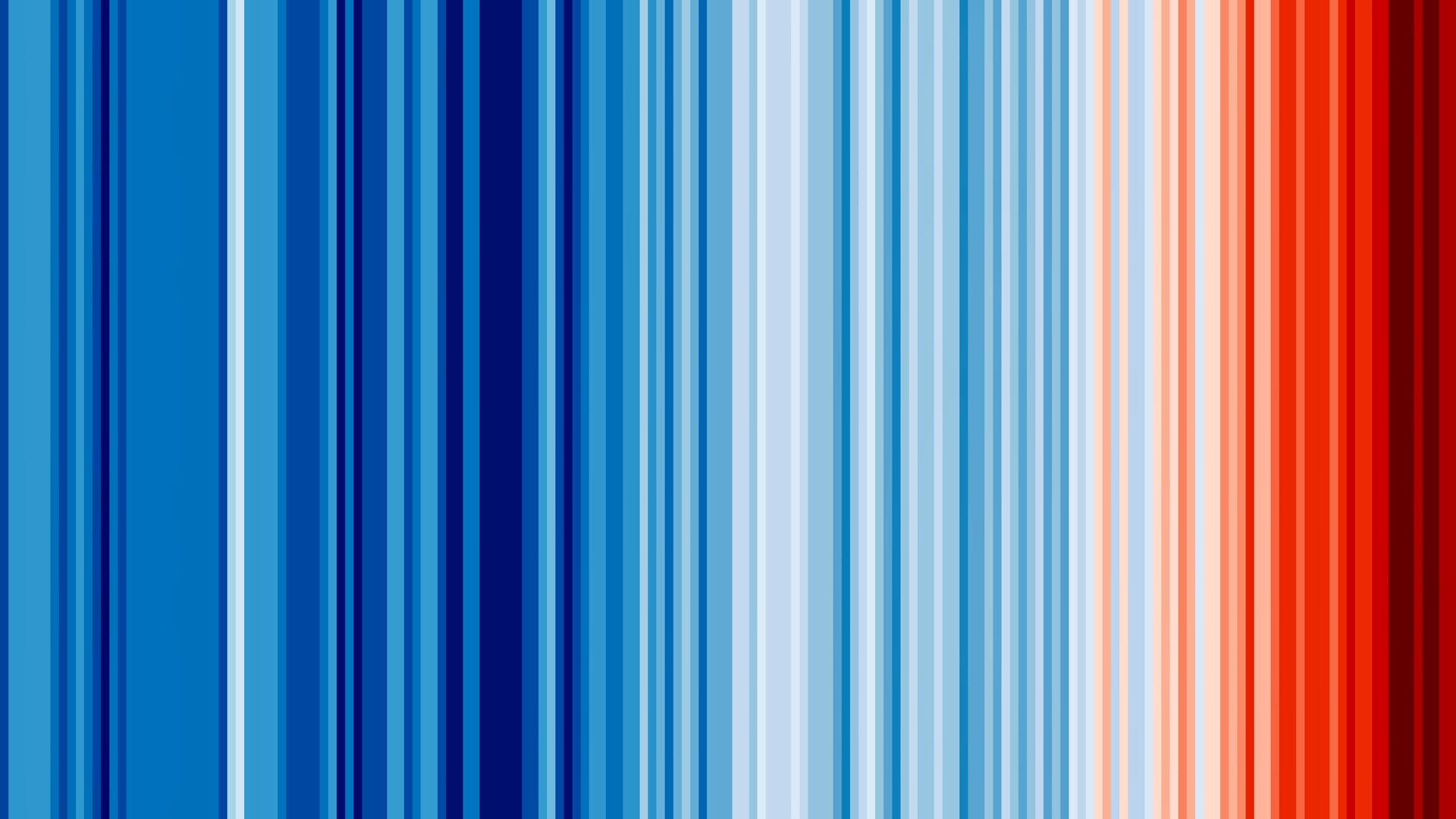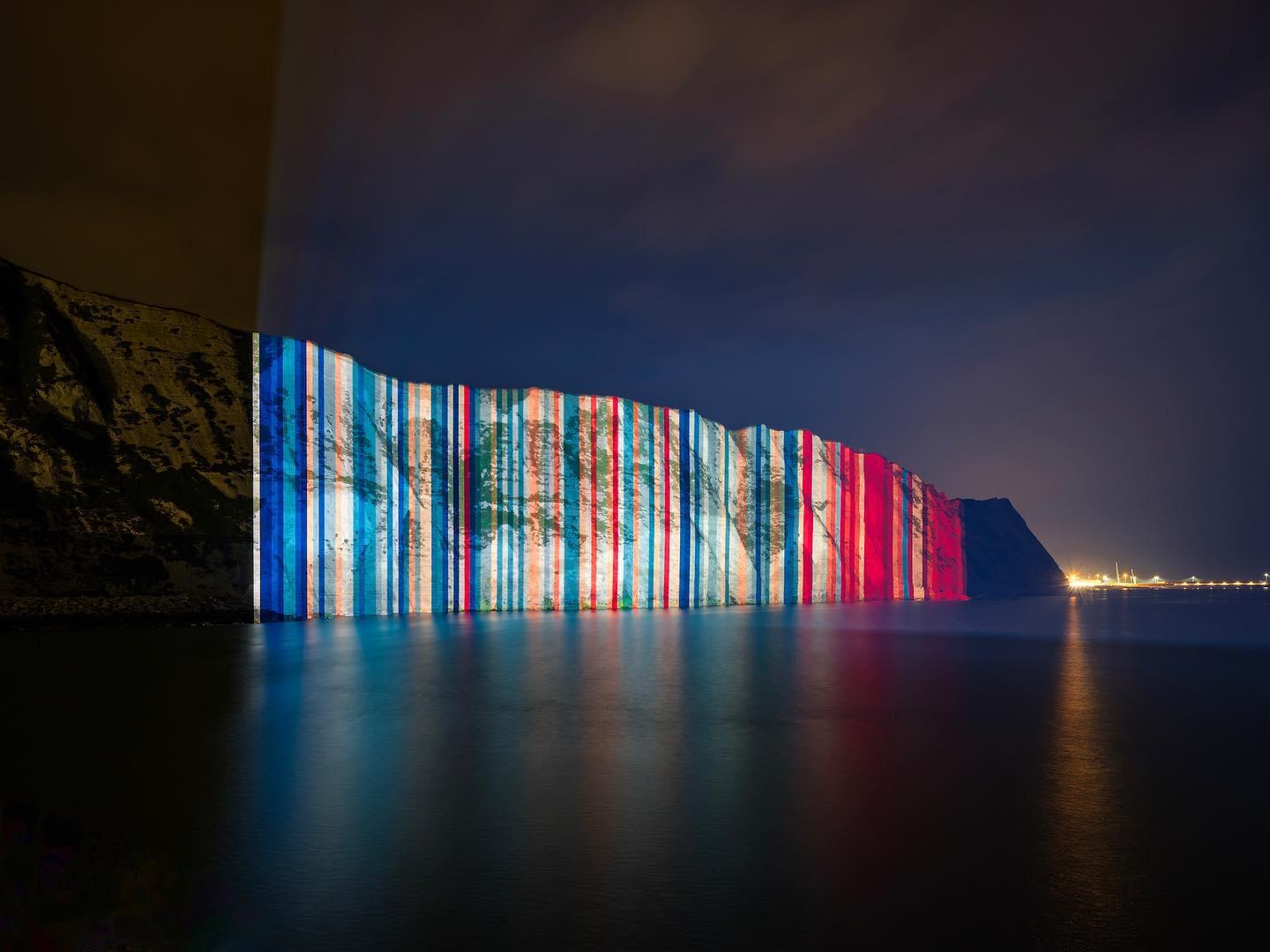In 2017, Ellie Highwood was trying to think of what to gift a colleague who had a baby on the way.
“I thought it would be nice to make them something that was meaningful,” said Highwood, then a professor of climate physics at the University of Reading in England. “So, I thought, OK, well, what can I do with blankets?”

Highwood, who enjoyed crocheting in her free time, came up with what she called the “global warming blanket” as a gift for the baby. She crocheted 100 rows — each representing the year’s global temperature, dating back 100 years, from 1916 to 2016.
“I did 100 years so, up until the baby was born. And I started with dark blues and purples to represent colder-than-average temperatures,” she said. “And over time, transitioning through some of the greens and yellows into oranges, and then, reds and [a] deep red, burgundy kind of color.”
Producing the temperature lines by hand, she said, is a way of internalizing the data. Highwood said she has since seen other scarves and blankets showing similar designs, including some that predated hers. But it was hers that went viral on X. Since then, the stripes, which have been reimagined and incorporated into everything from fashion to book covers, have become synonymous with raising awareness about climate change and global warming.
One of Highwood’s university colleagues found a way to take her crochet pattern to a whole new level.
In 2018, climate scientist Ed Hawkins created a data visualization site of the climate stripes as a series of vertical lines ranging from blue to red, and left to right.
Hawkins’ visualizations represent temperature changes measured in each country, region or city over the past 100 years, according to his site, ShowYourStripes.info. Users can also create a visualization for the temperatures in their specific locations.

But no matter which location’s data you look at, the general result is the same: As the years go by, the blues fade away, and orange, red and eventually, deep burgundy lines appear. This illustrates the rise in average temperatures in that location.
“These graphics are specifically designed to be as simple as possible,” Hawkins writes on his website. “And to start conversations about our warming world and the risks of climate change.”
The stripes are doing just that.
Sustainable designer Lucy Tammam featured the climate stripes in her couture collection at London Fashion Week, while the Envision Racing Formula E team has the stripes on their newest cars. The stripes have also graced the covers of major publications including The Economist and climate activist Greta Thunberg’s bestseller, “The Climate Book.”
High-level US, France and Chile politicians have even worn the stripes as pins and face masks while pushing climate policies.
Joost Brinkman, a co-founder of a Netherlands-based organization called Cycling4Climate, has also used the stripes in marketing materials and uniforms.
“The design is pretty beautiful, so it gets attention anyhow,” Brinkman told The World. “And then, when you talk and explain what it’s all about, people understand why we’re doing this and embrace it.”
No matter how far across the globe the climate stripes spread though, Highwood said the original blanket is still with its intended owner.
“The baby was given the blanket,” she said. “The baby is now 6-ish. And still has the blanket. It’s a little bit small. And I’m pretty sure her mom won’t ever let her get rid of it.”
The World is an independent newsroom. We’re not funded by billionaires; instead, we rely on readers and listeners like you. As a listener, you’re a crucial part of our team and our global community. Your support is vital to running our nonprofit newsroom, and we can’t do this work without you. Will you support The World with a gift today? Donations made between now and Dec. 31 will be matched 1:1. Thanks for investing in our work!
